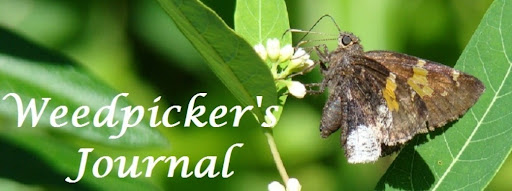If you don't bird well, then at least bird big. That's my personal theory on birding in Texas.
Christmas break presented an opportunity to spend time with my favorite non-birders for a vacation in Texas. To win them over to wing-watching, I planned to go big. Really big, like the endangered Whooping Crane, Grus americana. At nearly five foot tall, they are an impressive sight and easily the tallest of all North American birds.
 |
| Aransus National Wildlife Refuge on the Gulf Coast of Texas. |
Thankfully we have National Wildlife Refuges set aside for the protection and management of American wildlife.
Aransus NWR is officially out in the middle of no-where and about an hour drive from the hotels at Aransus Pass. It is well worth that drive to see native Whooping Cranes doing the things Whooping Cranes do. Even a non-birder is going to warm up to this gianormous white bird wading around in alligator infested wetlands eating crabs and alligator babies. Now that's a bad-ass bird.
You can keep your outlet mall shopping, this is my idea of a good time!
 |
| Three adult and one juvenile (sandy colored bird) at Goose Island. |
It was pouring rain most of that day, so hiking and photography conditions were sub-optimal. On the way back to town we stopped at Goose Island, a Texas State Park. While wandering around the back roads, we came across this scene of Whooping Cranes and cattle. They were a good eighth of a mile from the road, so this was the best shot I could procure in the rain and wind. Note: the cow in the back ground has a Cattle Egret riding on its back.
Whooping Cranes came close to joining the Dodos in extinction land. This Texas population (currently about 250 birds) is the last native Whooping Cranes in the U.S. There are some newly established Whoopers in Louisiana and a population is being encouraged in Florida. Some very dedicated people are working hard to help this species remain genetically viable and provide wintering grounds. Go to
www.operation migration to learn more.
 |
| The thousand year old "Big Tree" of Goose Island. |
An unexpected pleasure was around the next bend, as we just followed the signs to "The Big Tree." This giant Coastal Live Oak,
Quercus virginiana is obviously revered by the locals and tourists alike. The Civilian Conservation Corp built that low fence back in the 1930s to protect the tree from soil compaction by the adoring visitors. This thousand years old tree stood on the Texas coast when the pilgrims landed at Plymouth Rock. It stood through the Civil War. It continues today, although it relies on a few crutches and braces to help it through.
If a visit to Aransus is in you future, allow time to visit this monumental tree. It was one of my fondest highlights on the trip to Texas.
 |
| Shelly and Mark Goodman lend a little size perspective to the giant. |
Texas' South shores tour- next stop: Mustang and Padre Island.





No comments:
Post a Comment